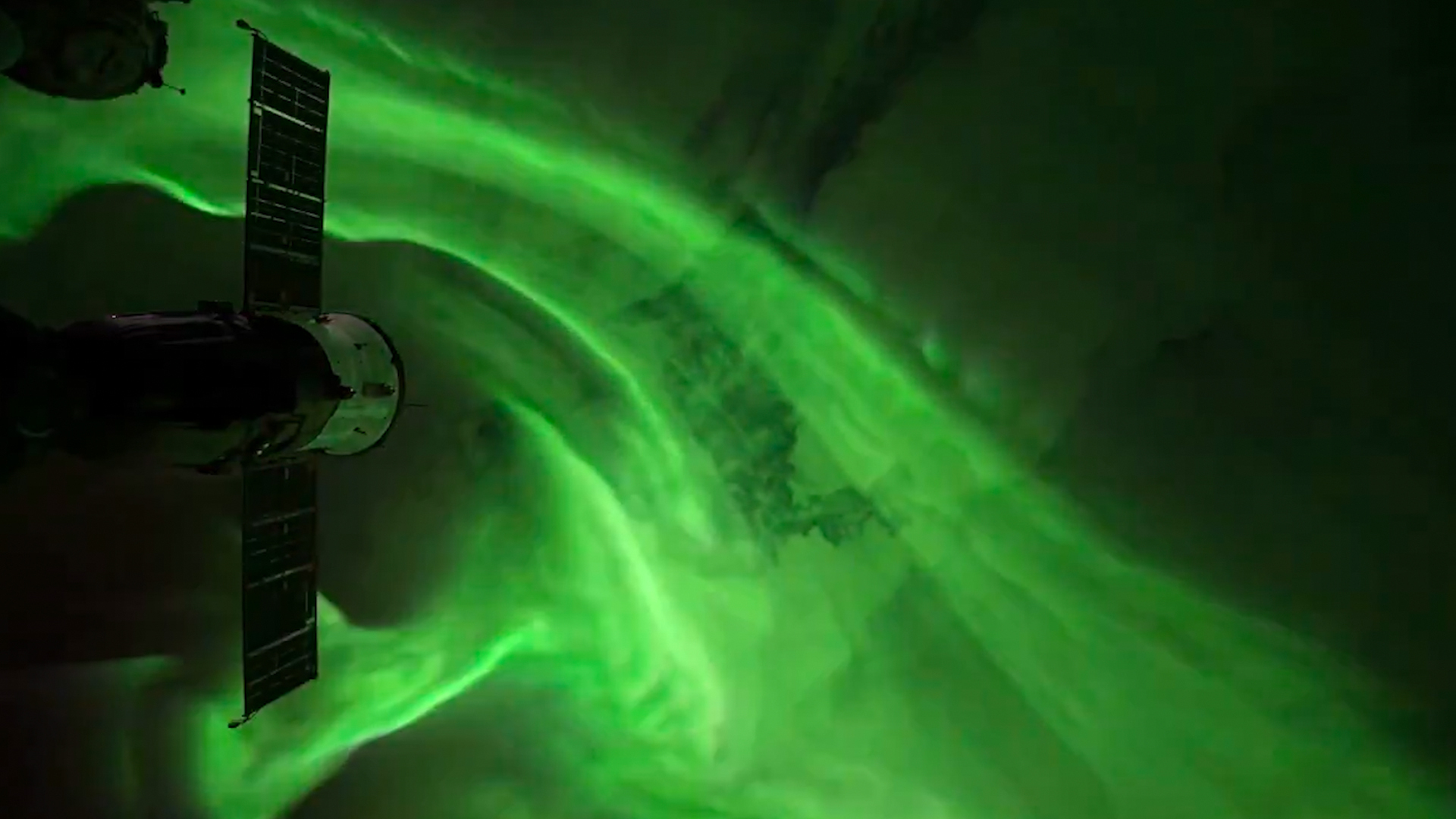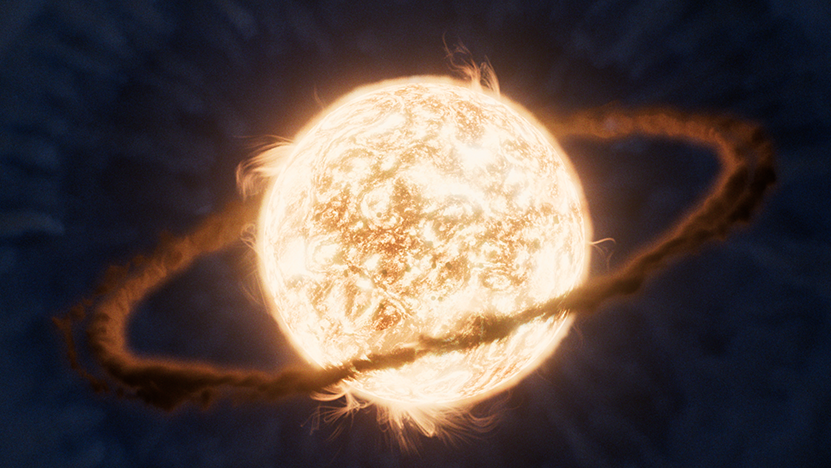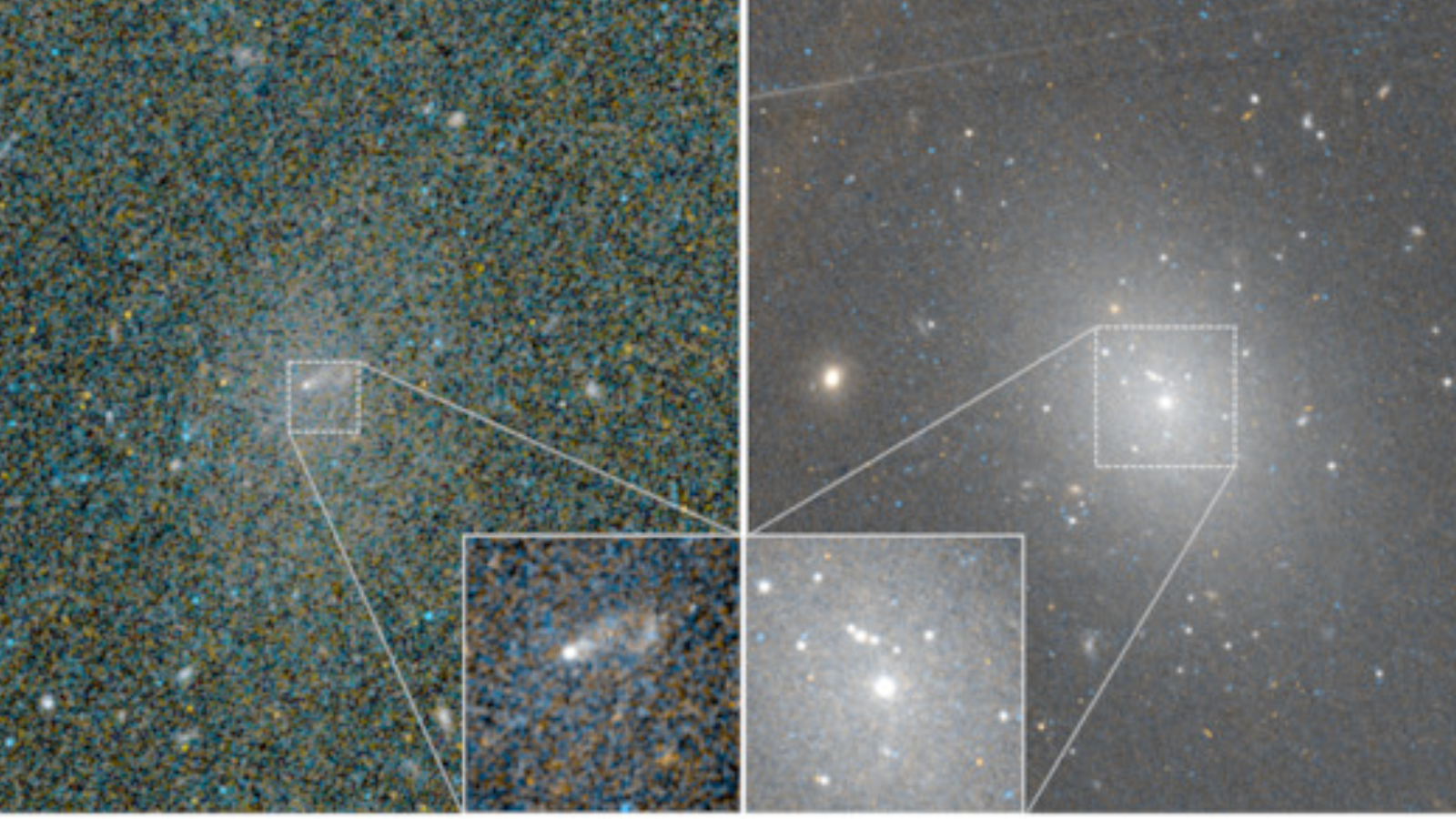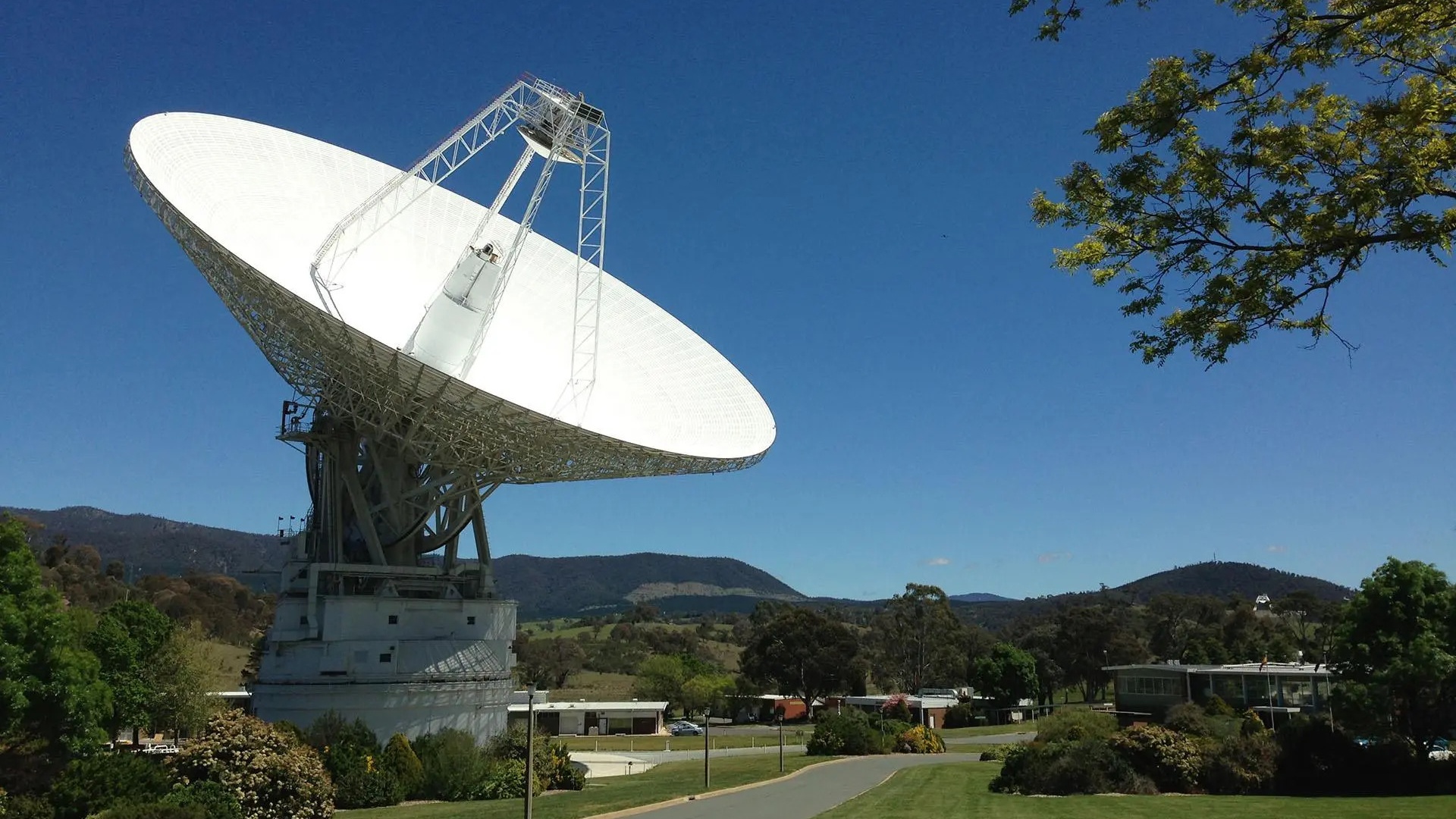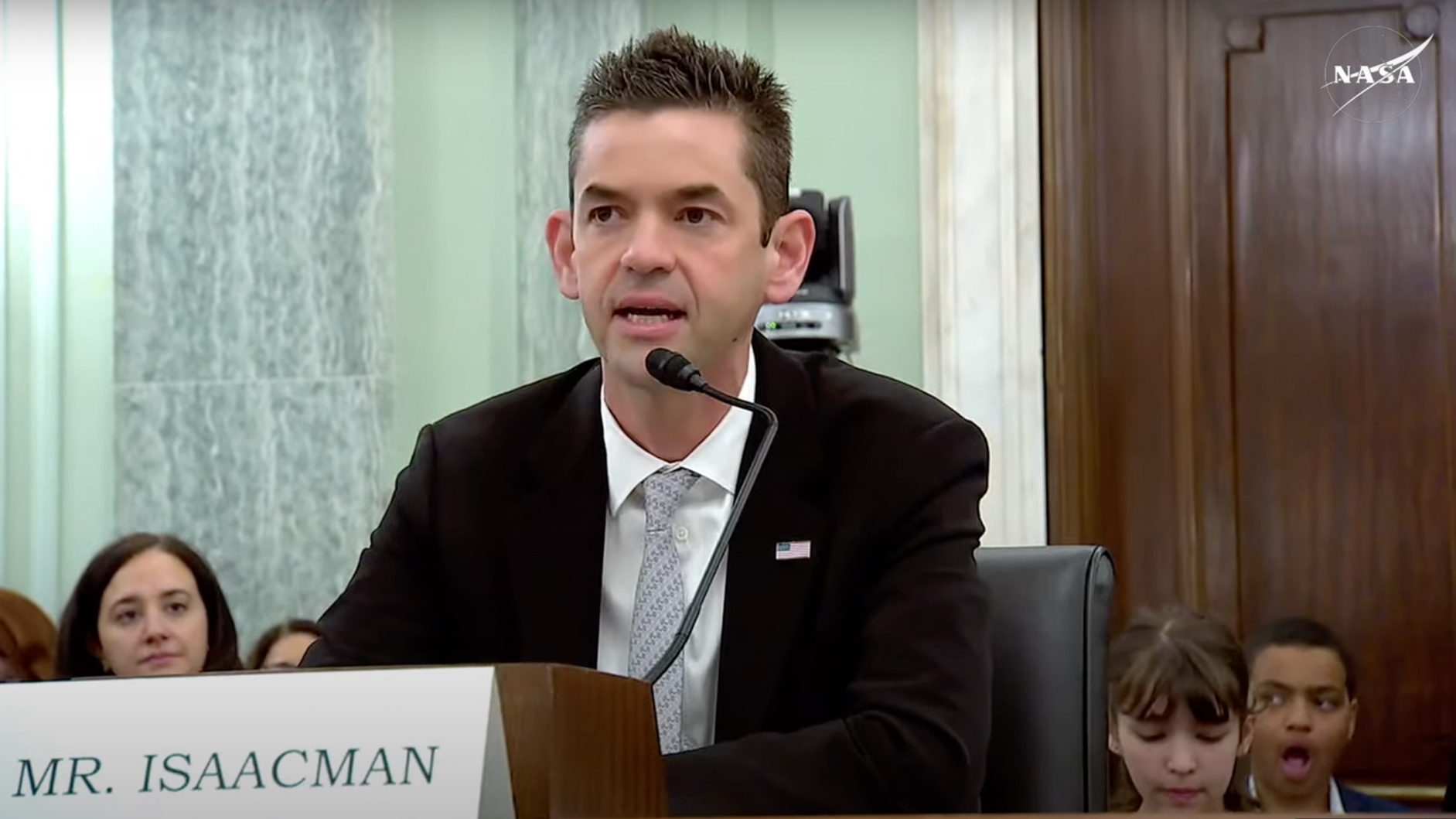NASA's Juno probe at Jupiter hits 'safe mode' glitch, but bounces back just fine
The culprit was probably Jupiter's incredibly intense radiation belts.
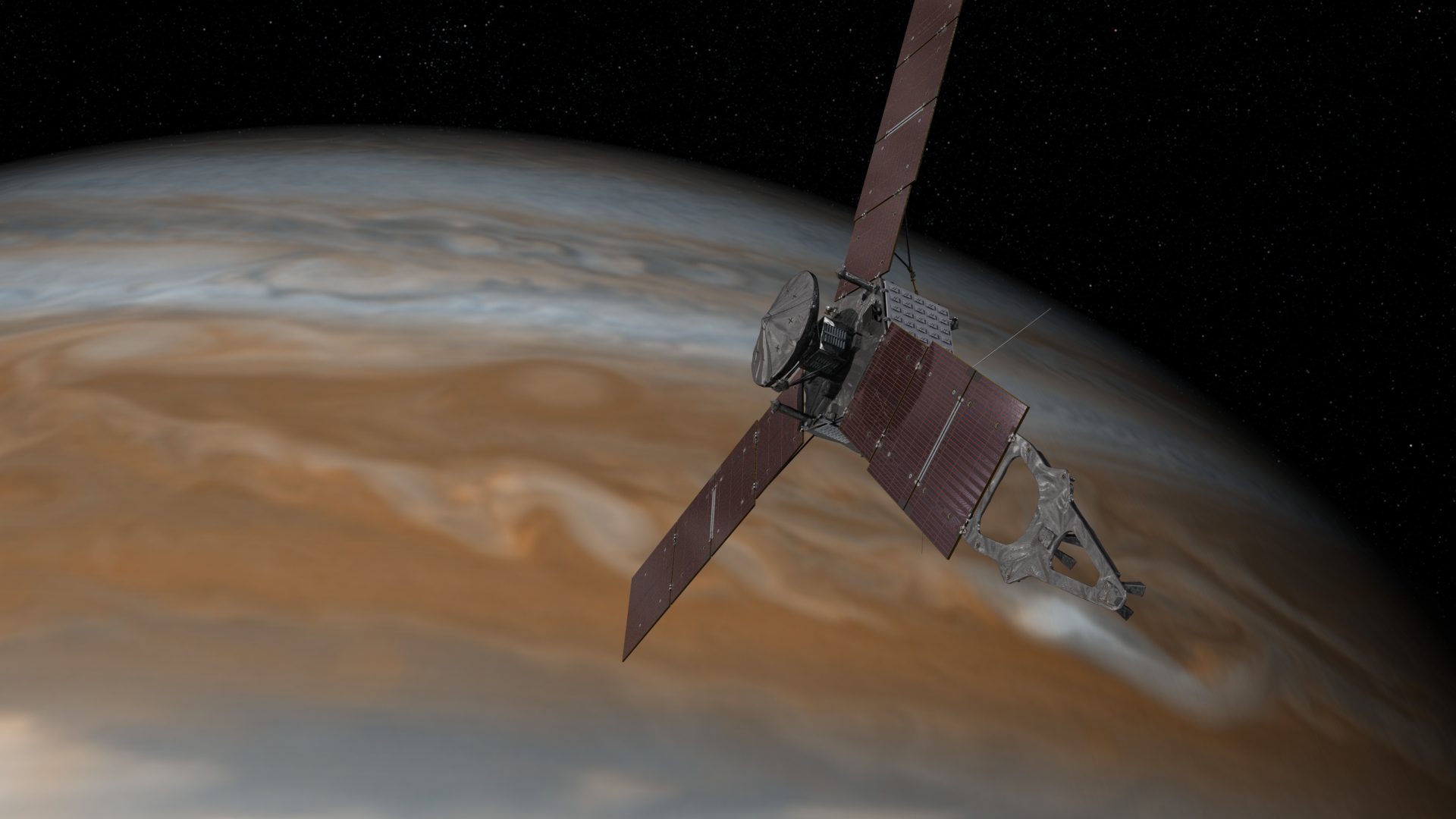
There's some good news and just-okay news about NASA's mighty little spacecraft Juno, which has been orbiting Jupiter since 2016.
The good news is that, on Wednesday (April 9), the agency announced that Juno is "back to normal operations." Which brings us to the just-okay news.
It would appear that Juno sort of unexpectedly dropped off the grid for a little while, having gone into "safe mode" twice on Friday (April 4). "Juno first entered safe mode at 5:17 a.m. EDT, about an hour before its 71st close passage of Jupiter — called perijove," NASA said in a statement. "It went into safe mode again 45 minutes after perijove."
"Safe mode" isn't necessarily something to worry about. It typically happens to spacecraft when an anomaly or malfunction is detected. When a spacecraft enters safe mode, it shuts off its instruments until everything returns to normal so it can continue its adventure.
For instance, the Hubble Space Telescope entered safe mode relatively recently as scientists worked on remedying some gyroscope issues, and TESS, the Transiting Exoplanet Survey Satellite, did as well. In fact, Juno itself has entered safe mode twice before, and both times bounced back online just fine.
Scientists are still waiting on diagnostic information to find a true explanation for the safe modes. They have a hunch, however. It likely has to do with Juno flying through radiation belts of Jupiter that lie close to the gas giant planet. These radiation belts are incredibly unforgiving, made of charged particles that zip around at unrelenting speeds. Earth has radiation belts as well — the Van Allen radiation belts — but comparing them to Jupiter's is kind of like comparing the intensity of a hot tub to a hot tub filled with lava. Probably even worse.
"To block high-energy particles from impacting sensitive electronics and mitigate the harmful effects of the radiation, Juno features a titanium radiation vault," NASA said.
Get the Space.com Newsletter
Breaking space news, the latest updates on rocket launches, skywatching events and more!
The next time Juno will approach these belts falls on May 7; hopefully Juno's comms aren't shaken up again.
Join our Space Forums to keep talking space on the latest missions, night sky and more! And if you have a news tip, correction or comment, let us know at: community@space.com.

Monisha Ravisetti is Space.com's Astronomy Editor. She covers black holes, star explosions, gravitational waves, exoplanet discoveries and other enigmas hidden across the fabric of space and time. Previously, she was a science writer at CNET, and before that, reported for The Academic Times. Prior to becoming a writer, she was an immunology researcher at Weill Cornell Medical Center in New York. She graduated from New York University in 2018 with a B.A. in philosophy, physics and chemistry. She spends too much time playing online chess. Her favorite planet is Earth.
You must confirm your public display name before commenting
Please logout and then login again, you will then be prompted to enter your display name.
